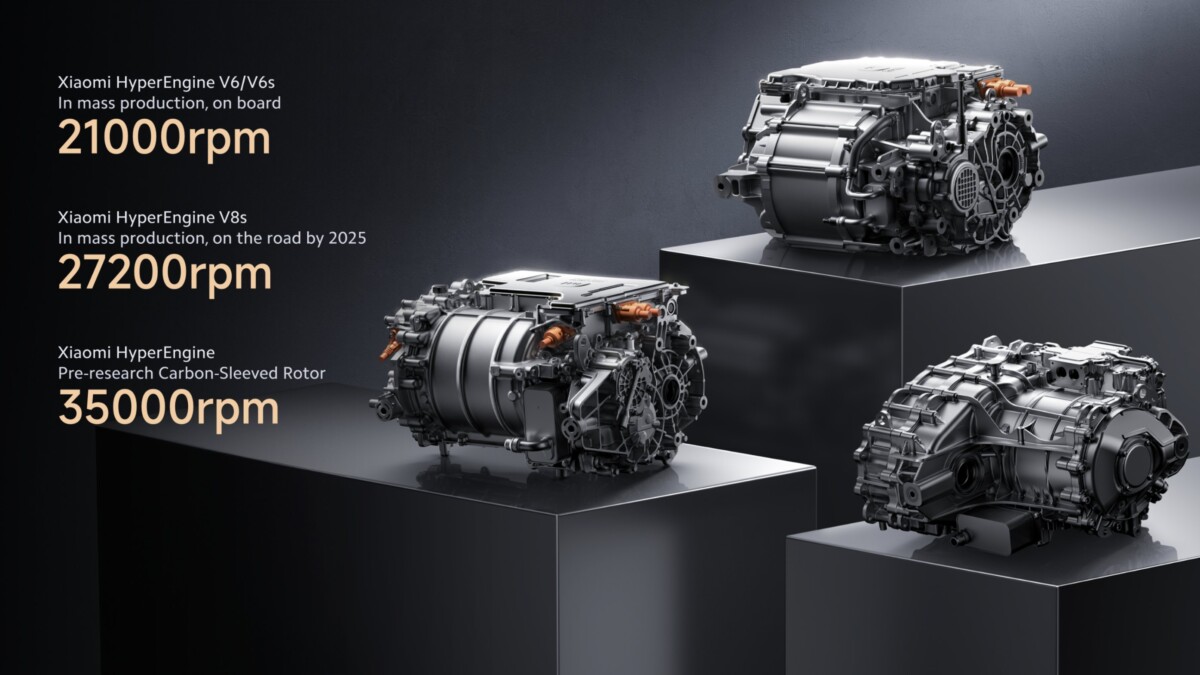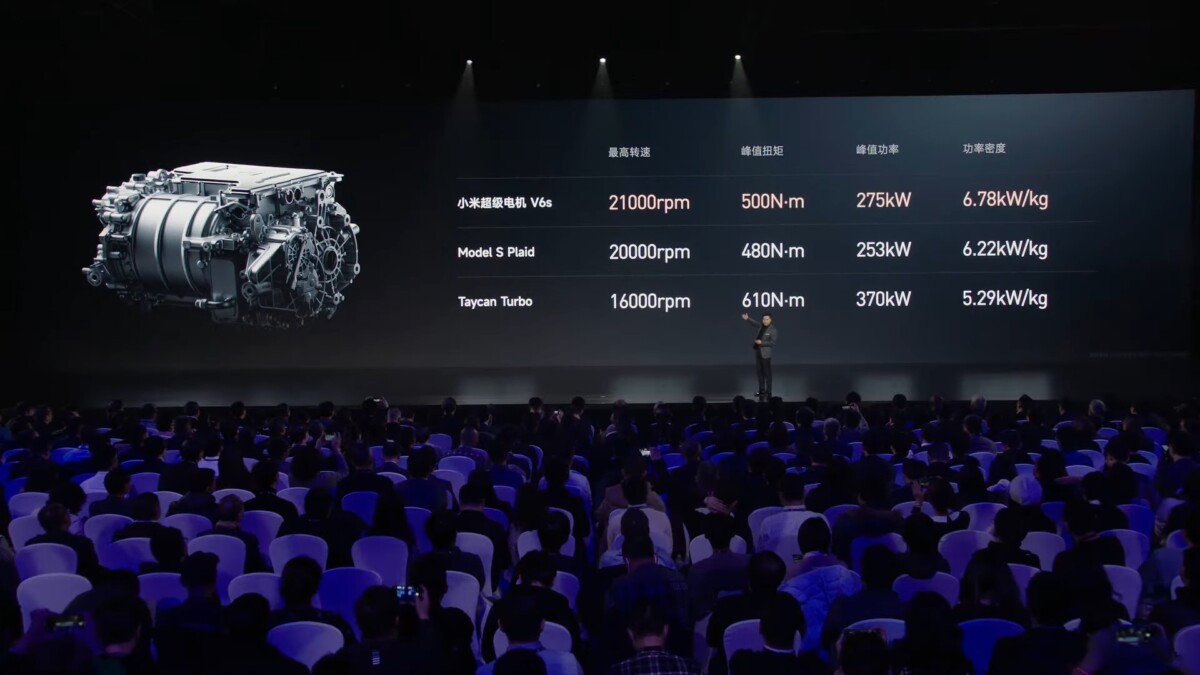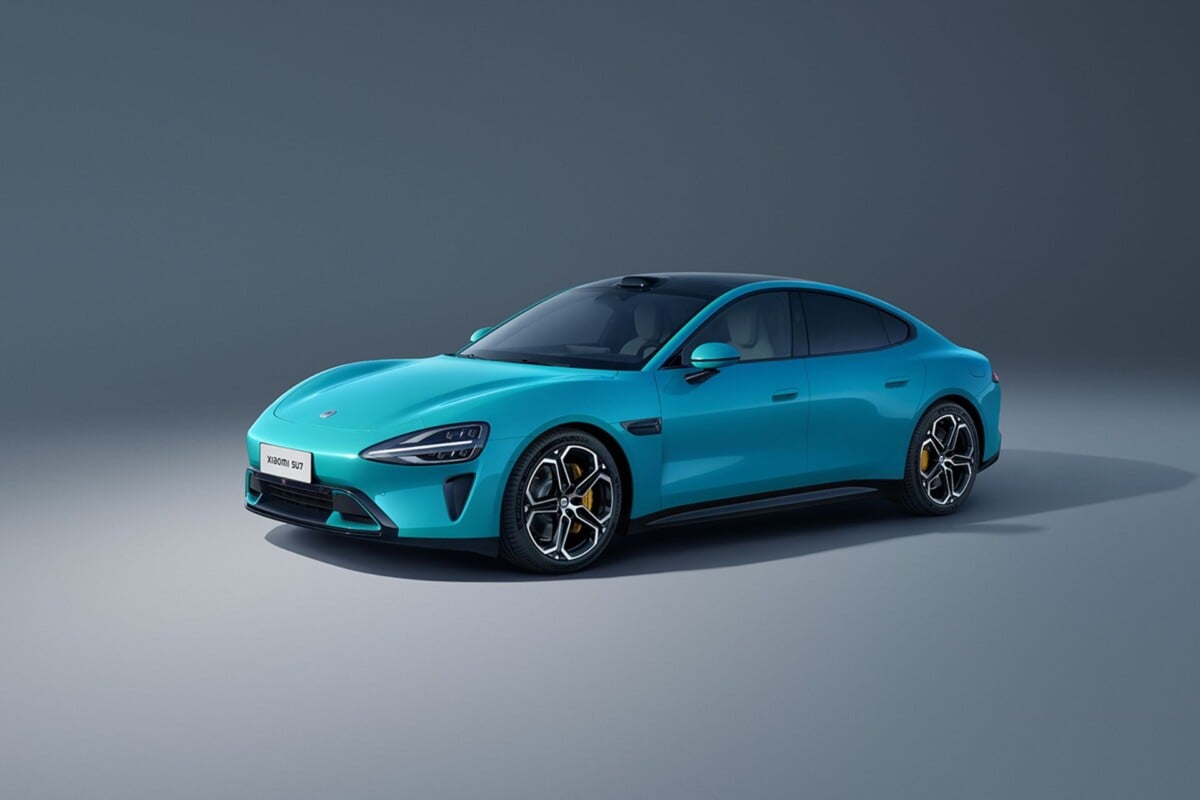After several months of rumors, Xiaomi is finally unveiling its SU7 electric sedan. The latter is equipped with a brand new ultra-technological electric motor, which proves once again that thermal cars are far behind. Xiaomi even allows itself to do better than Tesla with its Model S Plaid. Never seen.
Today, almost all manufacturers offer at least one electric car in their catalog. But that’s not all, because in addition to Chinese brands, certain companies specializing in tech also want to try their luck on this market. This is for example the case of Huawei and Baidu, a sort of equivalent of Google in China. But that’s not all.
An incredible engine
And for good reason, Xiaomi also wants to offer itself a piece of the cake, and even has the ambition to enter into the top 5 electric car manufacturers. For the moment, the latter is for the record dominated by Tesla, however closely followed by BYD which could take its place by the end of 2023. But this does not frighten Xiaomi, which has just officially raised the veil on his first electric car.
The latter bears the name SU7, and had already been shown a few days earlier after photos leaked on the internet. But now it is finally showing itself in all its forms, while the Chinese firm has also detailed all of its on-board technologies. And it is an understatement to say that they are numerous, in order to shake Tesla as well as its rivals BYD and Nio. But what interests us here is the sedan’s electric motor.

And for good reason, the latter was designed by the manufacturer, normally specialized in smartphones and is available in several versions. The first is the HyperEngine V6, but has absolutely nothing in common with the six-cylinder thermal block. This develops a power of 299 horsepower depending on the site AutoHome, for a torque of 400 Nm and with a 400 volt architecture. The slightly more efficient version, V6s, claims 347 horsepower and 500 Nm, with an 800 volt architecture. Maximum revs are announced at 21,000 rpm for both.
But that’s not all, because customers will also be able to benefit from an even more efficient version a little later. This is the HyperEngine V8s, which displays a maximum power of 578 horsepower and a torque of 635 Nm with a maximum speed of 27,200 rpm. The latter will be launched in the during the year 2025 and is in fact a real concentrate of technology and know-how on the part of the engineers of the brand from the Middle Kingdom.

Finally, a third engine, still in the research stage, using carbon, would be capable of reaching a maximum speed of 35,000 rpm. Never seen. For comparison, the Tesla Model S Plaid is “limited” to 21,000 rpm when the Porsche Taycan Turbo is limited to 16,000 rpm (but with a two-speed gearbox).
Interesting technology
In fact, the Chinese site It Home gives us some additional information on these three very high performance electric motors. The latter use a new technology of laser wound rotor. But what does this consist of? In fact, the manufacturer uses carbon fiber on the rotor of its electric motor, which is wound and solidified using a laser, for greater precision.
This method allows, according to the firm, to obtain a higher rate of return than for standard electric motors. Thus, the HyperEngine V8 of the Xiaomi SU7 displays not less than 98.11%, or less than 2% losses, which is excellent. Especially when compared to a heat engine, whose efficiency never exceeds 45%. That is, much of the energy is actually lost as heat, and not put into propulsion. Which means you have to produce a lot more for the same result.

It is also to optimize the efficiency that the three engines developed by the manufacturer display. a very high maximum speed. The power density of the V8s is displayed at 10.14 kW/kg according to laboratory tests. Compare with the 6.22 kW/kg of the Tesla Model S Plaid engine. All this then allows the electric sedan to go from 0 to 100 km/h in just 2.78 seconds, with two motors, in order to compete with the Tesla Model S Plaid and its 2.1 seconds thanks to three motors.
The SU7 also features a CTB (cell-to-body) battery, with LFP (lithium-iron-phosphate) cells integrated directly into the chassis. Two capacities will be offered, namely 73.6 and 101 kWh, for a theoretical range of up to 800 kilometers according to the Chinese CLTC cycle. The launch date of this new arrival which will compete with the Nio ET7 and the BYD Seal has not yet been announced at the moment.
Want to join a community of enthusiasts? Our Discord welcomes you, it is a place of mutual help and passion around tech.
